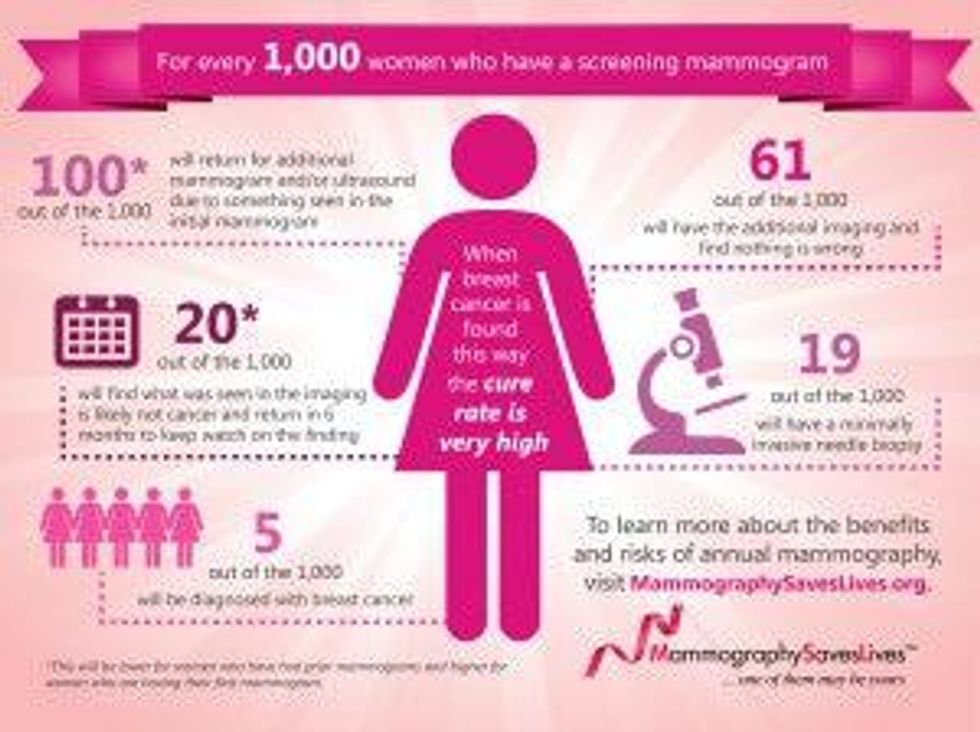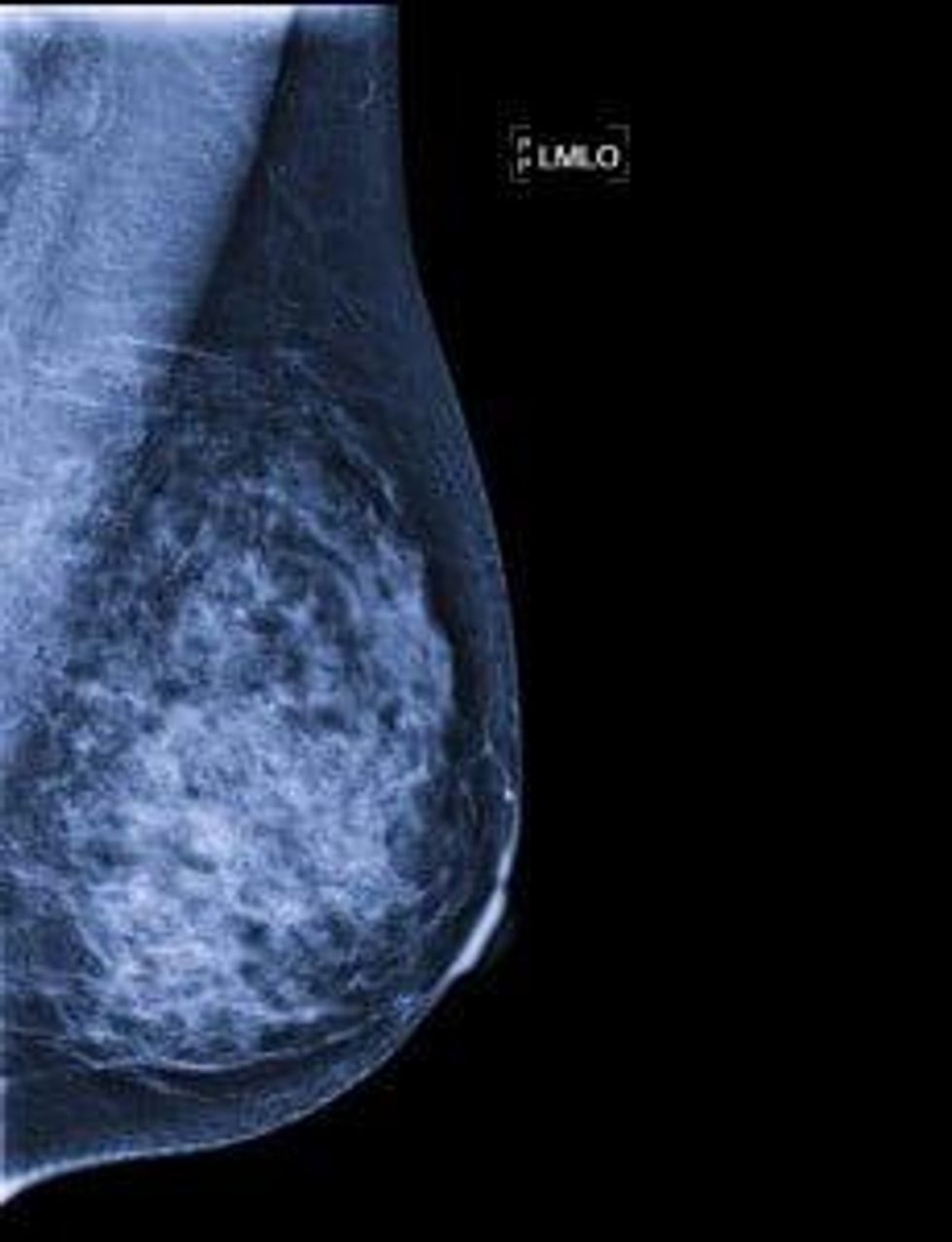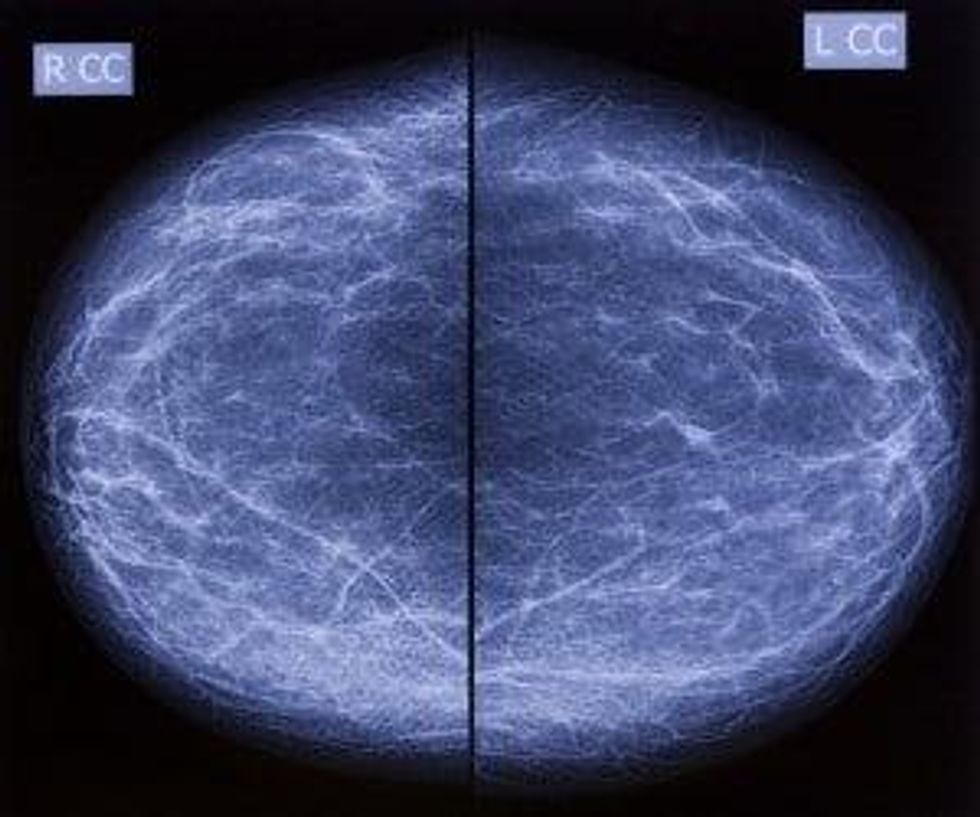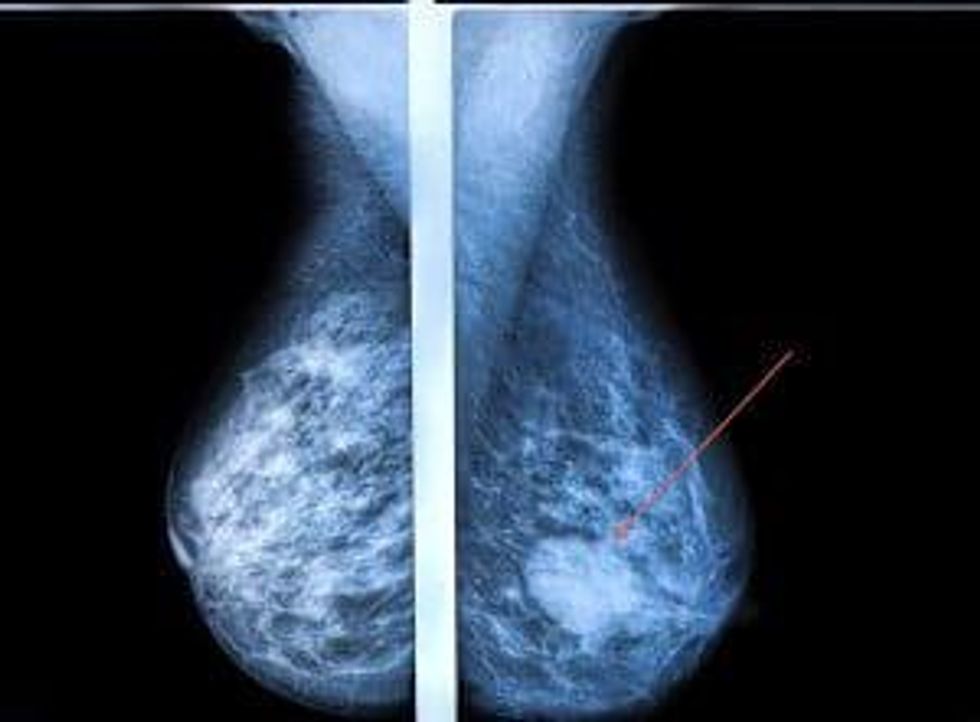We all know that October is Breast Cancer Awareness Month, but how aware are you? Do you know these three facts about breast cancer?
1. Did you know that for every 1,000 women who have a screening mammogram only five will be diagnosed with breast cancer?
MammographySavesLives.org
Let's break it down:
The vast majority of women who are screened will have reassuring results, with very few needing further imaging or testing.
- 100 women will return for an additional mammogram or ultrasound.
Of those:
- 61 women will find out that there is nothing wrong—whew!
- 20 women will find that what was seen is likely not cancer and will be advised to return in 6 months.
- 19 women will require a minimally invasive needle biopsy.
- Of the 5 women diagnosed with breast cancer, most will be found early and will have a 95 percent likelihood of cure.
2. Women with increased breast density may need additional screening.
When breast tissue is dense, it appears white on a mammogram. Unfortunately, breast cancer also appears white, so in a traditional mammogram, trying to find a breast cancer can be like trying to isolate a snowflake in a snowstorm.
This is an image from a mammogram of a what very dense breast tissue looks like. Can you spot the breast cancer?
Increased breast density
How about in this photo?
3. There are new and innovative ways to diagnose breast cancer. Here's a look at some options:
- Conventional mammography. Mammography is still the best first step in screening for breast cancer. Early detection means finding cancers early, which means higher cure rates. What surprises many women is that if something looks suspicious on a mammogram, we have more imaging options than ever before.
- 3-D mammography. Also known as tomosynthesis, this new screening technology can help radiologists look at breast tissue via multiple thin layers without shadowing and distortions. This helps them find suspicious areas that may be overlooked with conventional mammography. This image show how breast cancer is found using 3-D mammography.
The arrow points to a large breast cancer.
3-D mammogram with breast cancer
- Automated whole breast ultrasound. This is an advanced screening tool that allows radiologists to look differently through dense breast tissue to screen for small breast cancers that might be obscured in a mammogram. I've had this procedure myself. It is painless, takes less than 10 minutes and has been a beneficial screening tool at El Camino Hospital for women with dense breast tissue.
- Breast MRI (magnetic resonance imaging). This diagnostic screening option is particularly helpful for women with a history of breast cancer or those who have tested positive for the BRCA genetic mutations.
New breast imaging options are in development. Stay tuned for more information on PET scans and gamma molecular imaging. In addition, clinical trials are underway that utilize wearable devices that track cell changes within the breast, detecting cancer at its earliest stage.
Disclosure: I'm working with El Camino Hospital to help them get the word out about mammograms, breast cancer screening and the latest innovations for women's health.
Barb Dehn is a women's health nurse practitioner, award-winning author and nationally recognized health expert. She practices with Women Physicians in the Silicon Valley of California.
- What You Need to Know About a Breast Biopsy ›
- Should You Do a Breast Self-Exam? ›
- Breast Cancer Screening & Testing ›
- Your First Mammogram: Step-by-Step Guide - HealthyWomen ›
- Don’t Put Off Breast Cancer Screening — It Could Save Your Life - HealthyWomen ›
- Olivia Munn's Breast Cancer Diagnosis Is a Wake-Up Call - HealthyWomen ›










